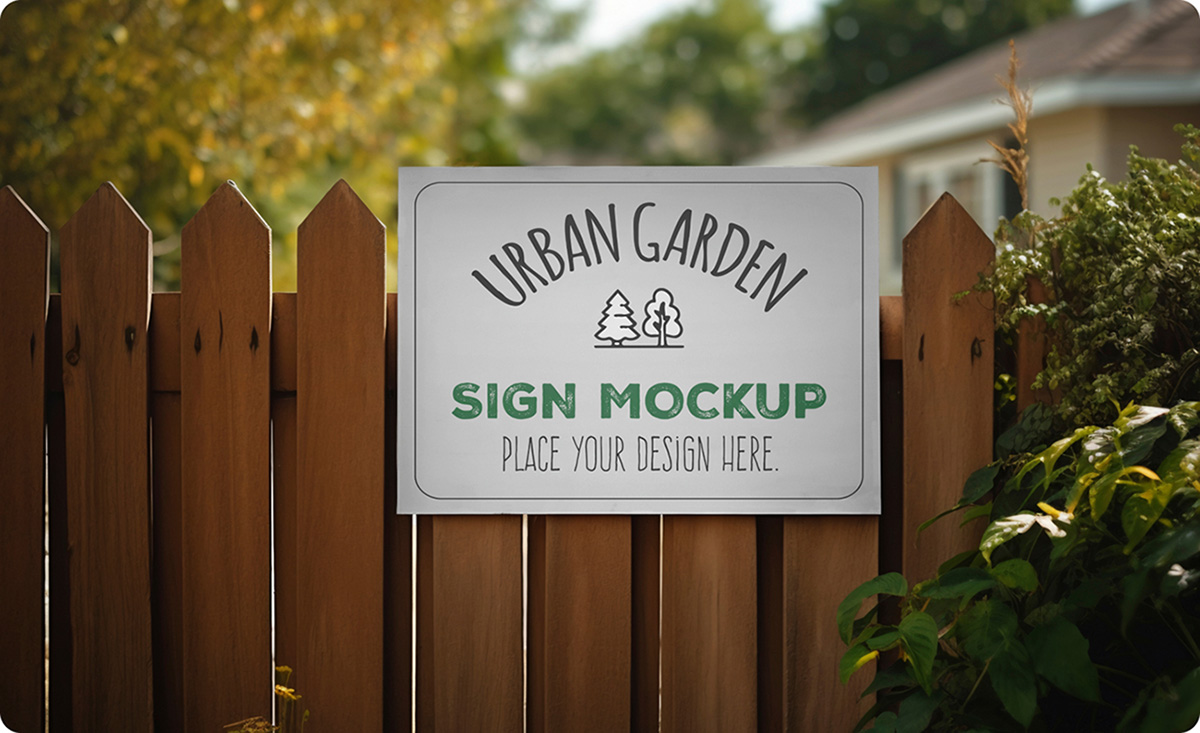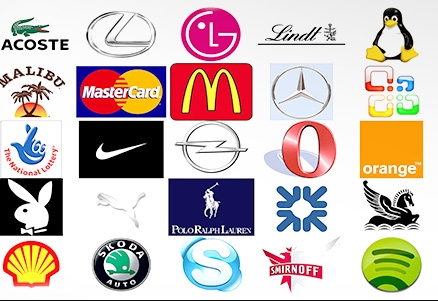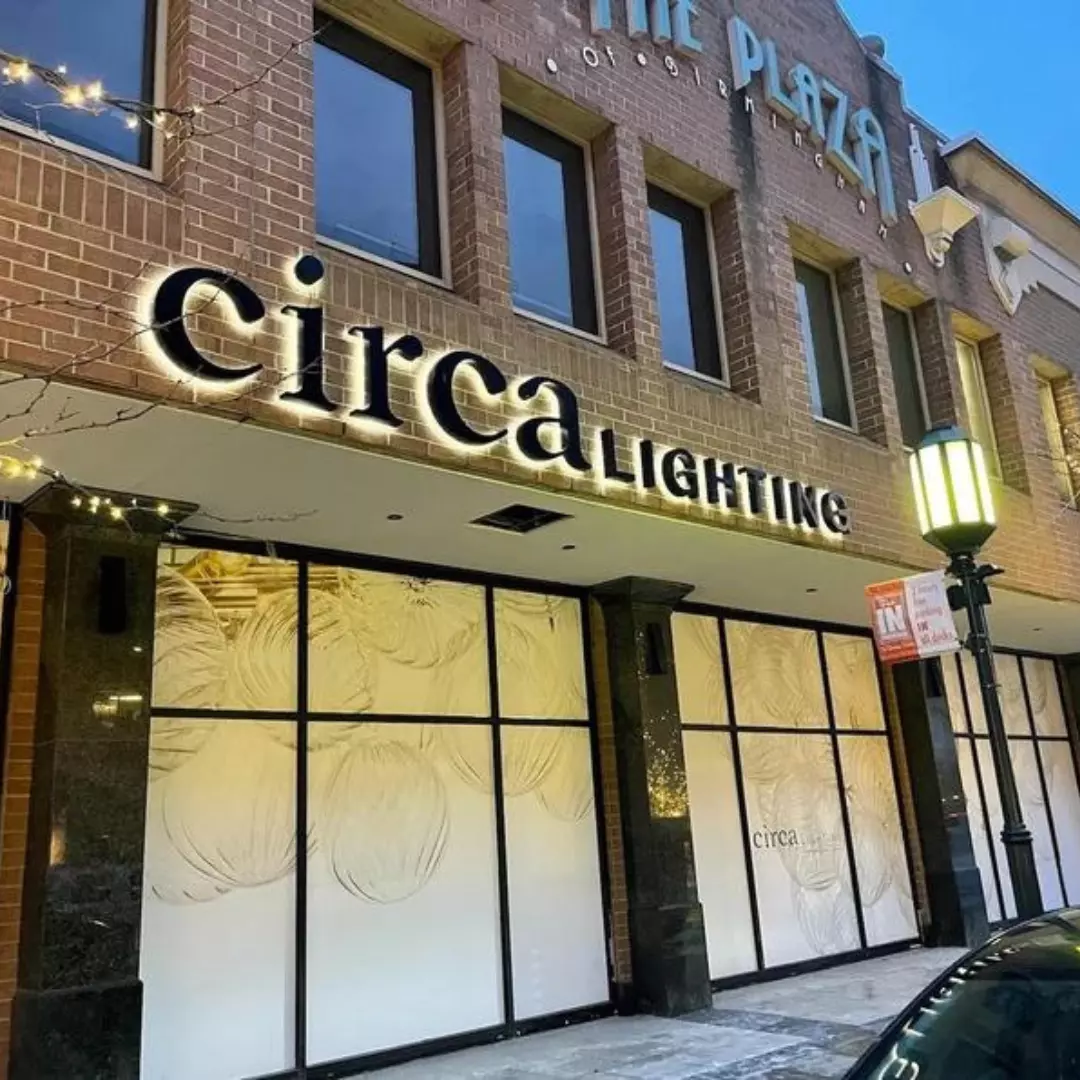The selection of materials for your storefront sign is a critical decision that impacts the sign’s durability, visual appeal, and the message it conveys to your audience:
Acrylic
Acrylic, often referred to by the brand name Plexiglas, is a transparent thermoplastic that is widely used for its optical clarity and lightweight nature. It is an excellent choice for lightbox signs due to its ability to diffusively scatter light, creating an even glow. Acrylic is also relatively easy to shape and can be fabricated into various forms, making it versatile for custom sign designs. Its non-yellowing properties ensure that the sign maintains its appearance over time.
Aluminum
Aluminum is a popular choice for outdoor signs due to its resistance to rust and corrosion. It is lightweight yet strong, making it suitable for a wide range of sign applications, from flat panel signs to dimensional letters. Aluminum can be easily anodized or painted, offering a broad spectrum of color options. Its resistance to harsh weather conditions makes it a durable and low-maintenance choice for long-term outdoor display.
Metal (Steel)
Steel is a robust material that provides exceptional strength and stability for larger or heavier signs. It can be powder-coated, which offers a more durable and weather-resistant finish compared to standard paint. The powder coating process allows for a wide range of colors and textures, enabling you to match your sign to your brand’s aesthetic. Steel is often used in the construction of pylon signs or monument signs that require a sturdy and long-lasting structure.
Wood
Wood brings a classic, warm, and natural aesthetic to signage, making it a popular choice for businesses aiming for a traditional or rustic look. Hardwoods like oak, maple, or cedar are often used due to their durability and resistance to rot and insect damage. Wood can be stained or painted to achieve various color schemes and can be carved or routed to create intricate designs and lettering.
MDO (Medium Density Overlay)
MDO is a type of high-quality plywood known for its smooth surface and resistance to warping, making it ideal for sign faces that require painting or vinyl application. It is denser and more dimensionally stable than standard plywood, which makes it suitable for outdoor use. MDO is often used for custom sign designs where a flat, solid surface is needed.
PVC (Polyvinyl Chloride)
PVC is a versatile and cost-effective material that is widely used in signage. It is lightweight, easy to work with, and can be routed to create intricate shapes and letters. PVC is also weather-resistant and can be used for both indoor and outdoor signs. It is often used for dimensional letters and shapes, offering a budget-friendly alternative to more expensive materials.
Corrugated Plastic
Corrugated plastic, also known as corrugated polyethylene or Coroplast, is a lightweight and budget-friendly material that is commonly used for temporary or short-term signage. Its fluted structure provides rigidity while keeping the material lightweight and easy to transport. It is typically printed with ink or vinyl and is suitable for yard signs, construction signs, and other temporary uses.
Fiberglass
Fiberglass is a strong and weather-resistant material that is often used as an alternative to metals for signs that need to withstand harsh weather conditions. It is lightweight, can be molded into various shapes, and can be finished to mimic the appearance of more expensive materials like metal or stone. Fiberglass is often used for signs that require a high-gloss finish or a more modern aesthetic.
Each material offers distinct advantages and aesthetic qualities that can be tailored to meet the specific needs and design goals of your business. By considering factors such as the sign’s location, the desired lifespan, maintenance requirements, and the overall brand image you wish to convey, you can select the optimal material for your storefront sign.
FAQ for Materials Used in Storefront Signs Construction
Q: Which material is best for outdoor signs that will be exposed to the elements?
A: Aluminum, steel with a powder-coated finish, and fiberglass are excellent choices for outdoor signs due to their durability and resistance to weather conditions.
Q: Can acrylic be used for outdoor signs, and how should it be protected from UV damage?
A: Yes, acrylic can be used for outdoor signs, but it should be of high quality and UV-stabilized to prevent yellowing and degradation over time. Additionally, using a protective coating or lamination can extend its lifespan.
Q: Is metal a good choice for all types of signs, and what are the maintenance requirements?
A: Metal, such as steel, is a versatile choice for many sign types, especially large or heavy signs. Regular maintenance includes cleaning and inspecting for rust, especially for non-powder-coated surfaces.
Q: What type of wood is best for signs, and how can it be protected against rot and insects?
A: Hardwoods like oak, maple, or cedar are ideal for signs due to their natural resistance to rot and insects. To further protect wood signs, use a sealant or finish that is designed to repel water and resist decay.
Q: Are MDO and plywood the same, and what makes MDO better for signs?
A: MDO (Medium Density Overlay) is a type of plywood with a smoother surface and higher density, making it more resistant to warping and better suited for painted signs compared to standard plywood.
Q: How cost-effective is PVC for sign construction, and what are its limitations?
A: PVC is a very cost-effective material that is lightweight and easy to shape. However, it may not be as durable as metal or wood for long-term outdoor use and can be susceptible to damage from impacts.
Q: What is the typical lifespan of a sign made from corrugated plastic, and when should it be replaced?
A: Corrugated plastic signs are typically used for short-term applications and may last from a few months to a couple of years depending on environmental exposure. They should be replaced when they show signs of wear, such as fading, or cracking, or if they no longer effectively communicate the intended message.
Q: Can fiberglass be used to mimic the look of other materials, and how is it finished?
A: Yes, fiberglass can be finished with a high-quality paint or gel coat that can mimic the appearance of metals, stone, or other materials. It’s lightweight and strong, making it a good choice for signs that require a specific aesthetic.
Q: How should I choose between different materials for my sign based on my budget and desired longevity?
A: Consider the environment where the sign will be displayed, the message you want to convey, and your maintenance capacity. For budget constraints with short-term needs, corrugated plastic or PVC might be suitable. For long-term, high-quality signs, consider metal, wood, or acrylic.
Q: Are there any environmental considerations to keep in mind when selecting materials for my sign?
A: Yes, consider the sustainability and recyclability of materials. Some materials, such as PVC, may have environmental concerns related to disposal, while others like wood can be sourced from responsibly managed forests.
Q: How does the material choice affect the weight and structural requirements of the sign?
A: Heavier materials like steel require more robust structural support, while lighter materials like acrylic or PVC can be used for larger signs without as much structural reinforcement.
Q: Can you paint directly on all materials, or are some better suited for vinyl or adhesive applications?
A: Most materials can be painted, but the surface preparation varies. MDO and acrylic, for instance, are known for their paintability, while PVC and corrugated plastic might be better suited for vinyl wraps or adhesive applications for certain designs.
Q: What are the common issues with using wood for outdoor signs, and how can they be mitigated?
A: Wood can be susceptible to warping, rotting, and insect damage if not properly treated and sealed. Using high-quality, weather-resistant wood and applying a protective finish can help prevent these issues.
Q: Is there a material that can be used for both the sign face and dimensional lettering?
A: Acrylic and PVC can be used for both sign faces and dimensional lettering, offering a cohesive look for your signage. They can be cut, shaped, and finished to match your design requirements.




Leave A Comment